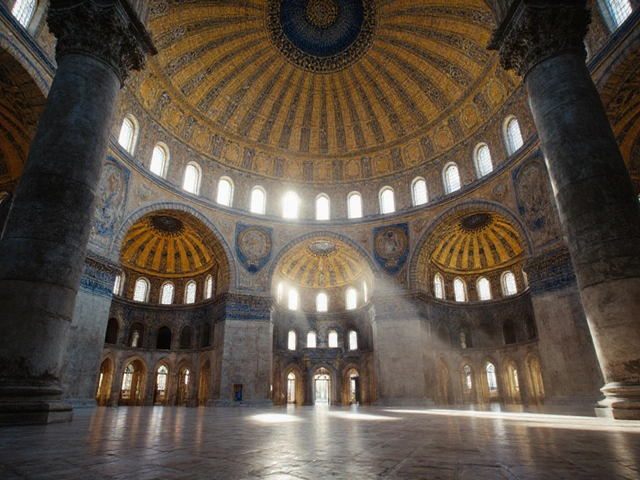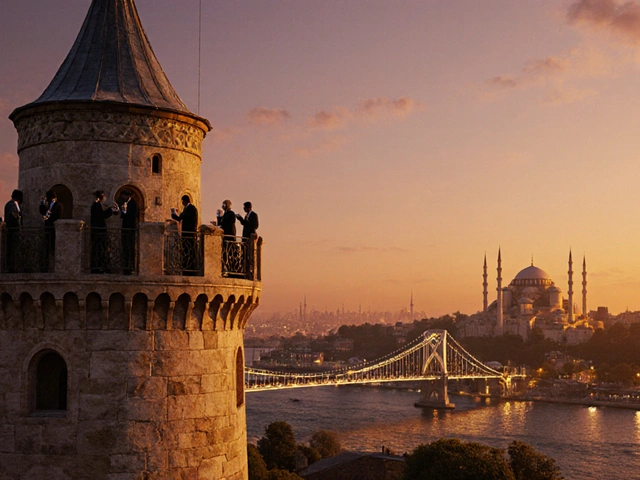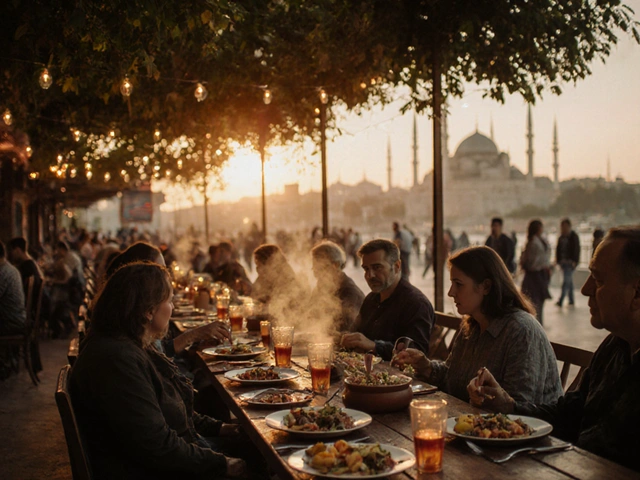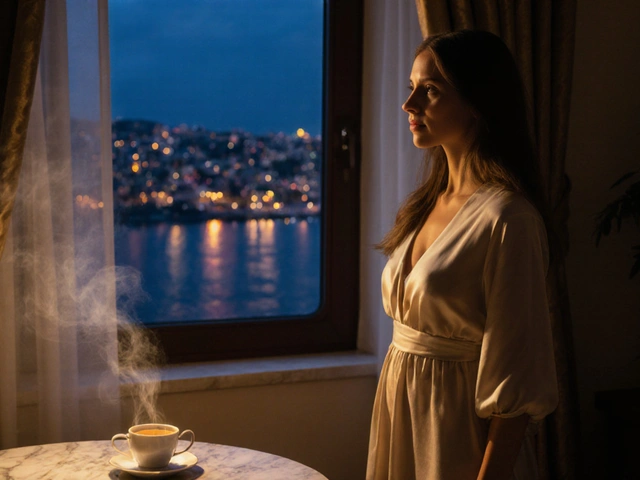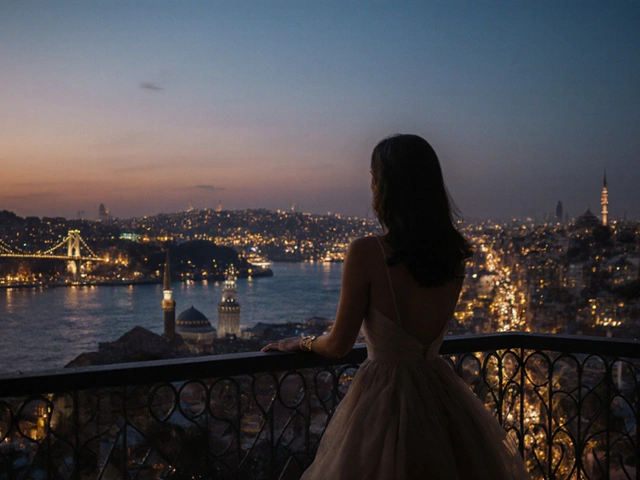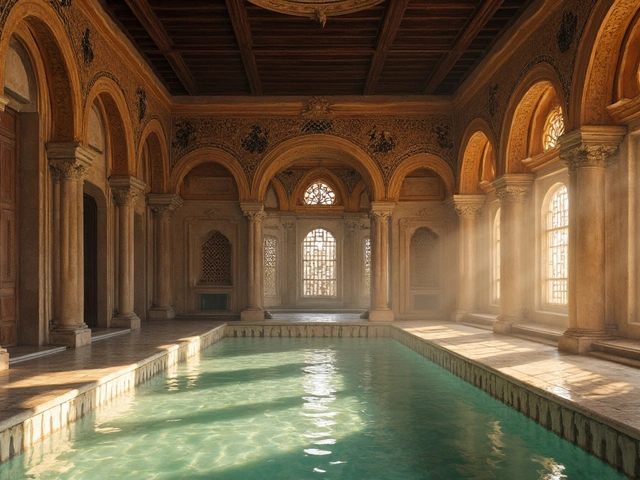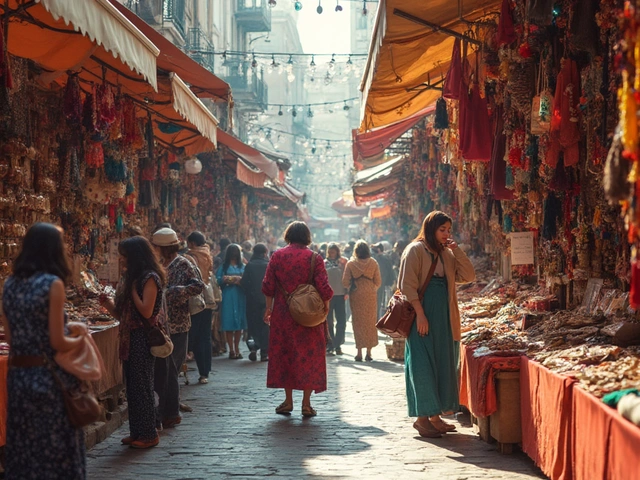Ever wonder why some movie scenes stick with you long after the credits roll? Often, it's not just the actors or the plot—it's the jaw-dropping places where the story unfolds. Iconic buildings in film and media have a knack for taking center stage, and let's face it, without them movies wouldn't have the same pizzazz.
Take the architectural splendour of places like Gotham City or Hogwarts. These aren't just backdrops; they're characters in their own right. They set moods, create atmospheres, and sometimes even act as plot drivers. It's no shocker they're etched in our minds long after we leave the theater.
But how exactly do these structures weave into the narrative? It's a brew of architectural genius and storytelling that filmmakers use to their full advantage. If you're a fan of movies, you'll want to know how these buildings bring stories to life, often quite literally. Keep reading, and I'll break it down for you—building by building.
- The Star Power of Iconic Architecture
- How Buildings Enhance Storytelling
- Famous Film Locations
- Behind the Scenes: Construction and Design
- Cultural Impact and Audience Connection
- Future of Architecture in Media
The Star Power of Iconic Architecture
Think about it—what's the first thing that comes to mind when you hear iconic buildings in films? Maybe it’s the Empire State Building in 'King Kong' or the Overlook Hotel in 'The Shining'. These structures didn't just serve as a set; they stole the show, providing a vibe and a personality that left a mark on viewers around the world.
These buildings work their magic by forming a deep connection between the story and the audience. They evoke emotions, a sense of place, and sometimes even the era the film is set in. For instance, Rome’s Colosseum in 'Gladiator' transported audiences back to ancient times, making the action scenes feel larger than life.
Iconic Locations That Made the Movies
Several buildings have been so influential, they seem to have their own fan base. Let’s check out a few:
- Hogwarts Castle: Featured in the 'Harry Potter' series, this whimsical structure was crafted using a mix of real locations and CGI, creating a magical world that still inspires fans today.
- Nakatomi Plaza: Known from 'Die Hard', this high-rise is actually LA's Fox Plaza. It brought a real-world, skyscraper feel that added an edge to the action-packed thriller.
- The Flatiron Building: Regularly showcased in Spider-Man movies, this odd-shaped building grabs attention and situates viewers in the bustling world of Manhattan.
The Influence of Architecture on Film's Success
Did you know that a study suggested films featuring iconic settings tend to perform better at the box office? Director James Cameron made the Titanic an unforgettable centerpiece in the film, contributing to its massive success worldwide.
Why do these architectural wonders hold such star power? Besides being visually striking, they make the setting of a story believable and immersive. Simply put, they transport us. They become the silent actors that etch scenes into our memories.
How Buildings Enhance Storytelling
So, how do iconic buildings make stories pop on the big screen? It's all about setting the perfect mood and reinforcing the narrative. Imagine Hogwarts in 'Harry Potter'—the castle is a mystical, ancient haven for wizardry, its very architecture sparking imagination. The look of its tall towers and hidden corridors adds layers to the storyline, making the magic feel real and achievable.
Creating Atmosphere
Atmosphere in films is like a silent actor. It's the ghostly mansions in horror movies, the shiny skyscrapers in futuristic plots, or the cozy cottages in rom-coms. For instance, in 'Blade Runner', the scarcely lit high-tech buildings reflect the dystopian vibe of the whole movie, underscoring the themes of isolation and technology overreach.
Symbolizing Themes
Beyond just looking cool, these structures often carry deep symbolic meaning. Take Paris's Notre-Dame in 'The Hunchback of Notre-Dame'. It's not just a church; it’s a symbol of sanctuary and societal conflict. The setting crystallizes the themes of beauty, justice, and redemption. Think also about Times Square in disaster movies; its familiarity makes the danger more palpable for the audience.
Directing the Plot
Sometimes, buildings steer the plot. Like in 'Die Hard', where Nakatomi Plaza isn’t just the setting of action; its confined space creates tension and challenges for the protagonist. Similarly, in 'Inception', the ever-changing world architecture is central to the story. It lends itself to plot twists and mind-bending reality checks that keep viewers on the edge of their seats.
Next time you watch a film, keep an eye on the iconic buildings. They’re doing more than just standing around looking special. They're telling tales and adding depth, subliminally affecting how you feel and what you think about the movie overall. That’s the magic of great architecture in cinema.
Famous Film Locations
When it comes to movies, some places are just as famous as the actors. Imagine stepping into King's Cross Station in London, half-expecting to see a student with a luggage trolley racing through a wall. That's the magic of how iconic buildings become landmarks, not just in real life but in the film world too!
One of the top stars is the New York Public Library. You've seen it in everything from 'Ghostbusters' to 'The Day After Tomorrow.' It's like the superstar of libraries. With its grand architecture, it screams sophistication and mystery, two things that film directors love.
Then there's the Bradbury Building in L.A. Ever watched 'Blade Runner'? This building's unique Victorian design and eccentric interior made it the perfect spot for a futuristic dystopia. You wouldn't expect such a historical gem to fit in a sci-fi flick, but there it was, stealing scenes and leaving an impact.
On-Screen Impact
Buildings in movies do more than just sit pretty. They influence the entire vibe of the film. In 'Inception,' the modern, sleek design of the Tokyo-inspired Sousa Building added to the movie's mind-bending twists. This shows that architecture can up the stakes in storytelling, offering visual metaphors that resonate long after you leave the theater.
- The Flatiron Building, NYC: Appears in 'Spider-Man' as the Daily Bugle's headquarters.
- Reichstag Building, Berlin: Showcased in 'The Bourne Supremacy' for its classic and grand appearance.
- Chicago Tribune Tower: Its Gothic, fortress-like design featured in 'Transformers: Dark of the Moon.'
Sometimes, filmmakers even build entire sets just inspired by real buildings. Take Hogwarts from 'Harry Potter'—many parts were filmed at real UK locations like Alnwick Castle, but a lot of Hogwarts was CGI inspired by real architectural elements. So in a way, reality puts the 'magic' in magical realism.
Behind the Scenes: Construction and Design
If you're thinking those iconic buildings in your favorite films just pop up overnight, think again. The magic happens thanks to the nitty-gritty world of construction and design. Every aspect, from initial sketches to final touches, plays a huge role in how these structures steal the show.
First off, let's chat about the design process. A strong vision is key, often starting with concept art and architectural blueprints. These become the go-to guides for building sets, whether they recreate existing places or create new ones to fit storylines. Think about the grandeur of Rivendell from The Lord of the Rings. Designers took inspiration from Art Nouveau and Gothic architecture, blending them into something otherworldly.
Materializing the Vision
So, how do designers bring these visions to life? It's all about materials. For instance, foam and fiberglass often replace heavy stone or steel, helping create intricate facades without the hassle. In Hogwarts, most interior shots used sets that blended wood forms with foam carvings to provide the castle's rustic charm without bogging down production.
Engineering Meets Movie Magic
Of course, there's also the work behind capturing the finished structure on film. Directors collaborate with production designers to make sure every shot showcases the architecture just right. They consider lighting, camera angles, even time of day to ensure the iconic buildings enhance the storytelling.
| Movie | Featured Building | Design Influence |
|---|---|---|
| The Lord of the Rings | Rivendell | Art Nouveau, Gothic |
| Harry Potter | Hogwarts | Medieval, Gothic |
Seeing these buildings in all their glory wouldn't be possible without the creativity and sheer effort that goes into their construction and design. So, next time you're wowed by a movie location, tip your hat to the behind-the-scenes wizards making it happen!
Cultural Impact and Audience Connection
Iconic buildings in film and media do more than just serve as eye candy—they forge intense cultural bonds and enhance the audience's emotional engagement. Think about places like the Empire State Building or the Colosseum. When these landmarks appear on screen, they evoke a sense of familiarity, grounding fantastical plots in a touch of reality.
Movies and TV shows often rely on these structures to tap into the rich history and emotions associated with them. For instance, the Empire State Building in "King Kong" isn't just an iconic scene-stealer; it symbolizes ambition and the vastness of the modern world. It's this kind of storytelling that bridges the gap between the reel and the real world.
Shaping Perceptions
These iconic buildings also shape how viewers perceive a city or culture. Picture the Eiffel Tower in Paris—its countless appearances in films have cemented its status as a symbol of romance and elegance. Films have the power to make us fall in love with places through these structures, influencing travel and boosting tourism.
Interestingly, some architectural gems only gain celebrity status because of their on-screen presence. The Shard in London, for example, gained global recognition after being featured in movies like "Skyfall." This highlights the transformative power of film in elevating a building's profile.
Audience Feedback and Cultural Resonance
Why do audiences connect so deeply with these buildings? It's partly nostalgia and partly the allure of new cultures. Viewers may have personal experiences tied to these locations or dream of visiting them, and seeing them on screen strengthens that connection.
- Emotional Evocation: They often arouse intense emotions, making scenes unforgettable.
- Identity Symbolism: Serve as cultural symbols, representing entire cities and their vibe.
- Relatability: Offer viewers something recognizable, making the fantasy worlds more relatable.
This relationship is a two-way street. If filmmakers successfully establish this bond, they leave a lasting impression, making viewers eager for sequels, spin-offs, or even a visit.
Future of Architecture in Media
As we look to the future, one thing's for sure: iconic buildings aren't going anywhere in film and media. In fact, they're poised to become even more influential. With advancements in technology, directors and architects are pushing the envelope, designing cities and structures that are more imaginative and immersive than ever.
Virtual reality and augmented reality are game changers. Imagine exploring a movie set in an ultra-modern skyscraper or a historic castle without leaving your couch. These technologies are making it possible. Movies in the future might not just feature iconic buildings; viewers will interact with them, stepping into the films themselves.
3D Printing and Architecture
The rise of 3D printing is reshaping how architecture is included in films. Directors can bring to life fantastical buildings quickly and efficiently, not only as digital constructs but also as tangible sets. This makes the impossible possible, allowing filmmakers to realize their wildest architectural dreams without blowing the budget.
Environmental Integration
Sustainability is another biggie in the future of film architecture. As awareness of climate issues grows, there's a push for environmentally integrated designs both in real life and on-screen. Expect to see more eco-friendly showcases in movies, perhaps using green technologies as plot points or character elements.
The future also holds endless possibilities for blending real-world architecture with digital enhancements. More old-school iconic buildings will get digital facelifts, adapting to futuristic settings while retaining their historical charm. Thanks to CGI, these hybrid creations elevate film storytelling to whole new levels.
In years to come, the line between reality and make-believe in architecture on the big screen will blur, offering viewers experiences that are both engaging and utterly convincing.


